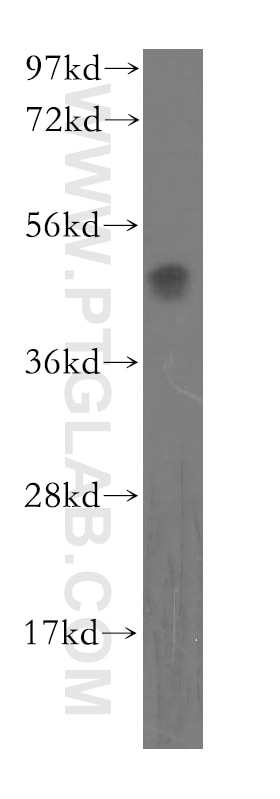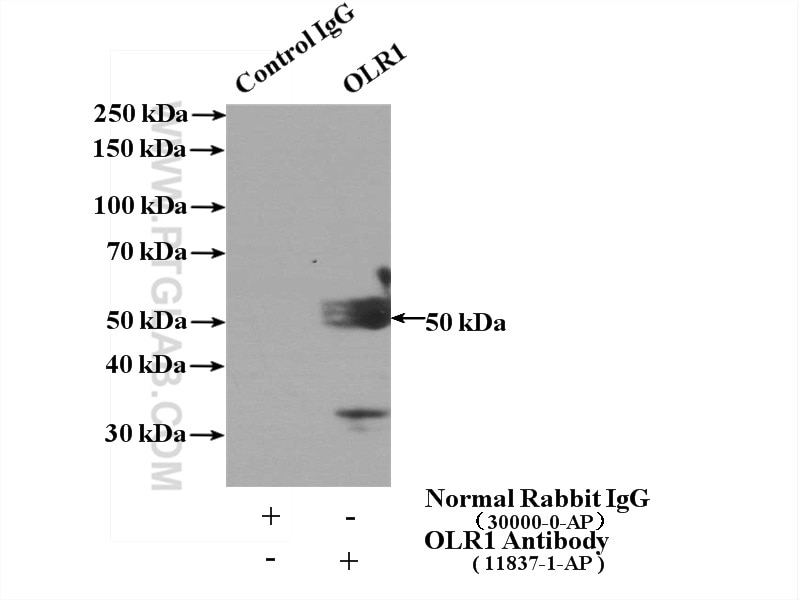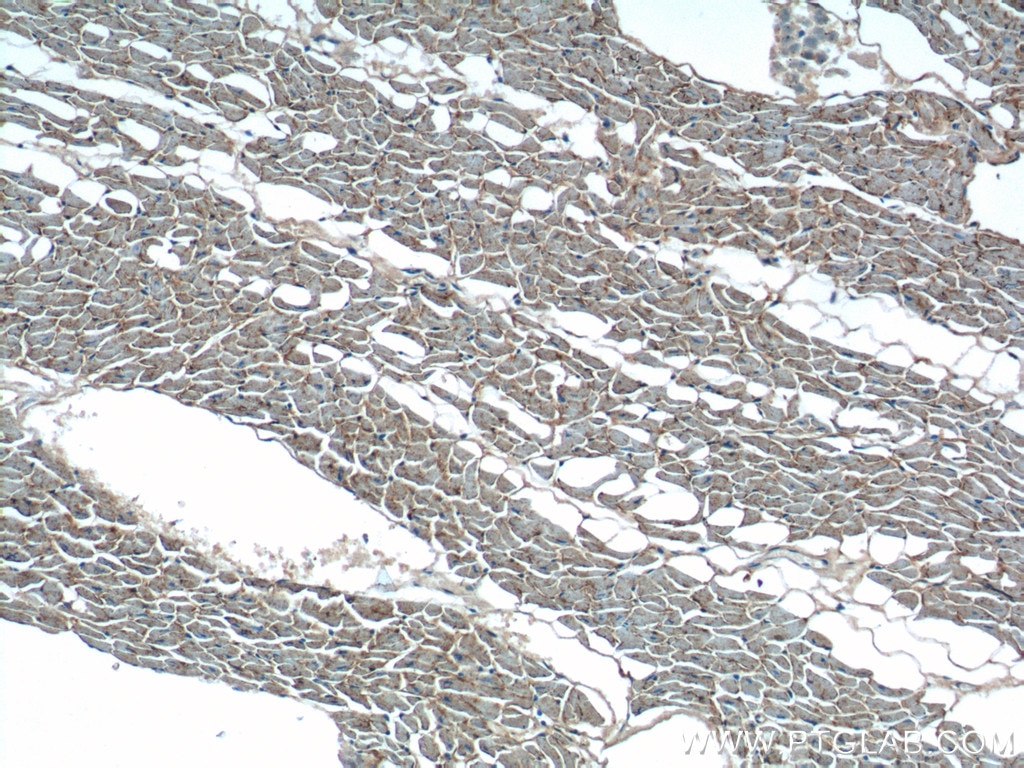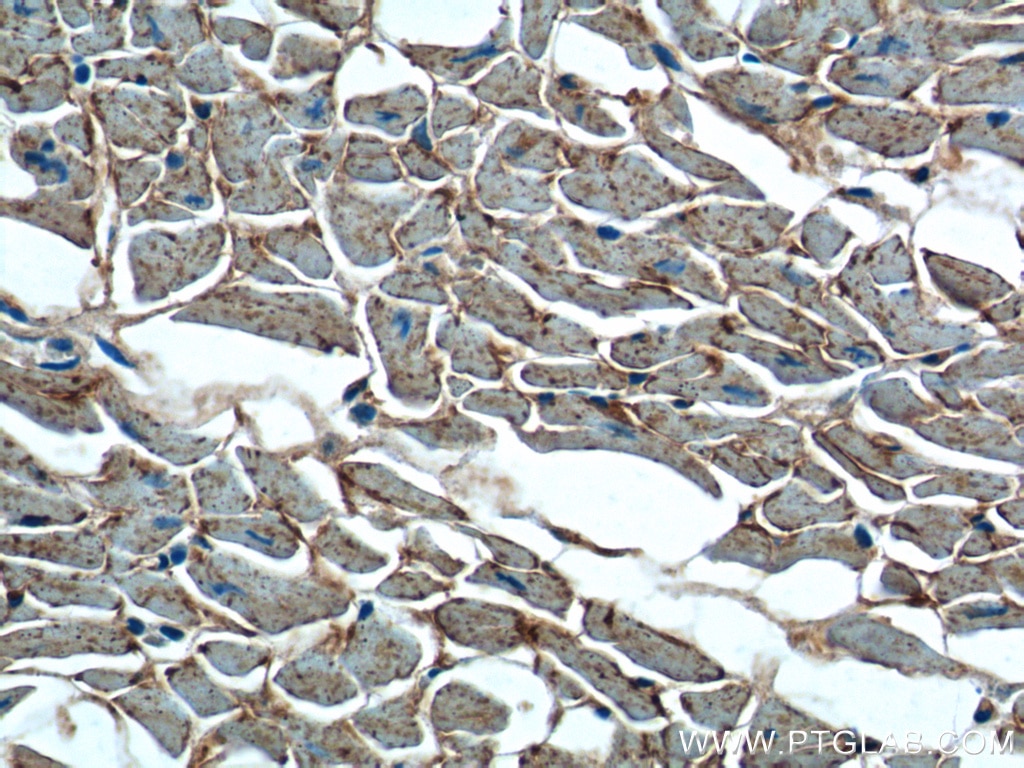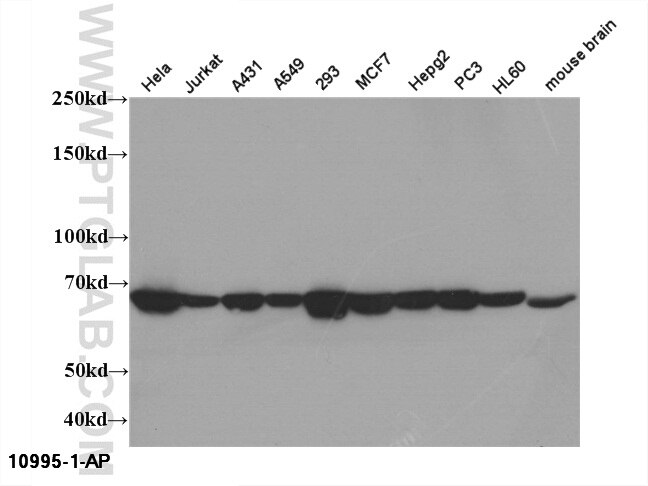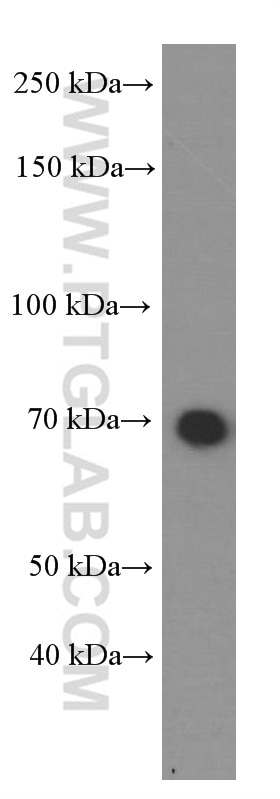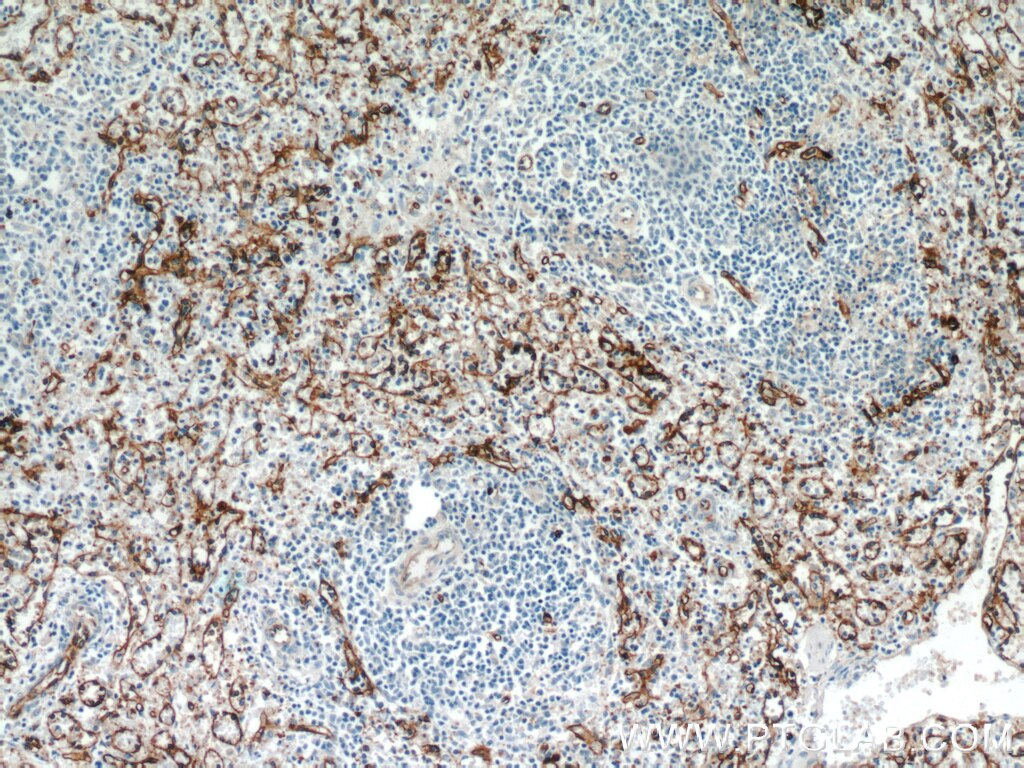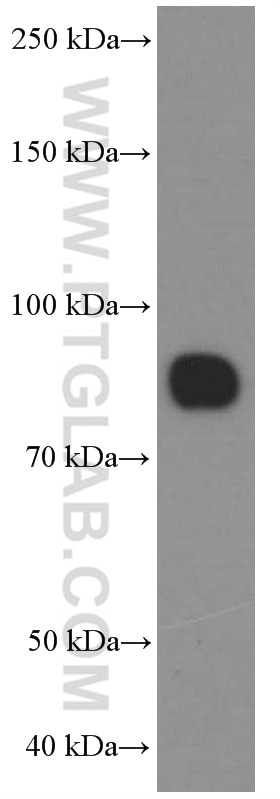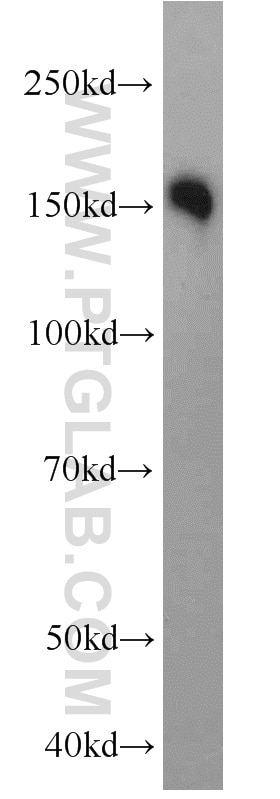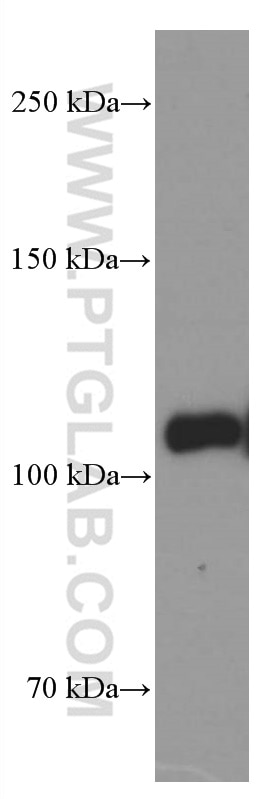- Phare
- Validé par KD/KO
Anticorps Polyclonal de lapin anti-OLR1
OLR1 Polyclonal Antibody for WB, IP, IHC, ELISA
Hôte / Isotype
Lapin / IgG
Réactivité testée
Humain, souris
Applications
WB, IP, IF, IHC, CoIP, ELISA
Conjugaison
Non conjugué
N° de cat : 11837-1-AP
Synonymes
Galerie de données de validation
Applications testées
| Résultats positifs en WB | cellules bEnd.3, tissu hépatique humain |
| Résultats positifs en IP | cellules L02 |
| Résultats positifs en IHC | tissu cardiaque humain il est suggéré de démasquer l'antigène avec un tampon de TE buffer pH 9.0; (*) À défaut, 'le démasquage de l'antigène peut être 'effectué avec un tampon citrate pH 6,0. |
Dilution recommandée
| Application | Dilution |
|---|---|
| Western Blot (WB) | WB : 1:1000-1:6000 |
| Immunoprécipitation (IP) | IP : 0.5-4.0 ug for 1.0-3.0 mg of total protein lysate |
| Immunohistochimie (IHC) | IHC : 1:50-1:500 |
| It is recommended that this reagent should be titrated in each testing system to obtain optimal results. | |
| Sample-dependent, check data in validation data gallery | |
Applications publiées
| KD/KO | See 4 publications below |
| WB | See 28 publications below |
| IHC | See 10 publications below |
| IF | See 6 publications below |
| CoIP | See 1 publications below |
Informations sur le produit
11837-1-AP cible OLR1 dans les applications de WB, IP, IF, IHC, CoIP, ELISA et montre une réactivité avec des échantillons Humain, souris
| Réactivité | Humain, souris |
| Réactivité citée | Humain, souris |
| Hôte / Isotype | Lapin / IgG |
| Clonalité | Polyclonal |
| Type | Anticorps |
| Immunogène | OLR1 Protéine recombinante Ag2437 |
| Nom complet | oxidized low density lipoprotein (lectin-like) receptor 1 |
| Masse moléculaire calculée | 273 aa, 31 kDa |
| Poids moléculaire observé | 50-55 kDa |
| Numéro d’acquisition GenBank | BC022295 |
| Symbole du gène | OLR1 |
| Identification du gène (NCBI) | 4973 |
| Conjugaison | Non conjugué |
| Forme | Liquide |
| Méthode de purification | Purification par affinité contre l'antigène |
| Tampon de stockage | PBS avec azoture de sodium à 0,02 % et glycérol à 50 % pH 7,3 |
| Conditions de stockage | Stocker à -20°C. Stable pendant un an après l'expédition. L'aliquotage n'est pas nécessaire pour le stockage à -20oC Les 20ul contiennent 0,1% de BSA. |
Informations générales
OLR1/LOX-1 acts as a receptor, in the form of homodimer, that mediates the recognition, internalization, and degradation of oxidatively modified low density lipoprotein (oxLDL) (PMID: 9052782, 15695803). ORL1 is predominantly expressed in endothelial cells and vascular-rich organs such as the placenta, lung, liver, and brain (PMID: 9828121). OLR1 is a protein containing 273 amino acids with a calculated molecular mass of 31 kDa but an apparent molecular mass of 50 kDa, which may result from the glycosylation of four potential N-linked glycosylation sites located at the C-terminal domain (PMID: 9052782).
Protocole
| Product Specific Protocols | |
|---|---|
| WB protocol for OLR1 antibody 11837-1-AP | Download protocol |
| IHC protocol for OLR1 antibody 11837-1-AP | Download protocol |
| IP protocol for OLR1 antibody 11837-1-AP | Download protocol |
| Standard Protocols | |
|---|---|
| Click here to view our Standard Protocols |
Publications
| Species | Application | Title |
|---|---|---|
Free Radic Biol Med Up-regulation of thioredoxin system by puerarin inhibits lipid uptake in macrophages | ||
Cancer Lett Up-regulation of OLR1 expression by TBC1D3 through activation of TNFα/NF-κB pathway promotes the migration of human breast cancer cells.
| ||
Metabolism Deacetylation of Caveolin-1 by Sirt6 induces autophagy and retards high glucose-stimulated LDL transcytosis and atherosclerosis formation. | ||
Sci Rep Lectin-like oxidized low-density lipoprotein receptor-1 facilitates metastasis of gastric cancer through driving epithelial-mesenchymal transition and PI3K/Akt/GSK3β activation.
| ||
Int J Cancer The oxidized-LDL/LOX-1 axis in tumor endothelial cells enhances metastasis by recruiting neutrophils and cancer cells. | ||
Mol Cancer Res OLR1 Promotes Pancreatic Cancer Metastasis via Increased c-Myc Expression and Transcription of HMGA2.
|
